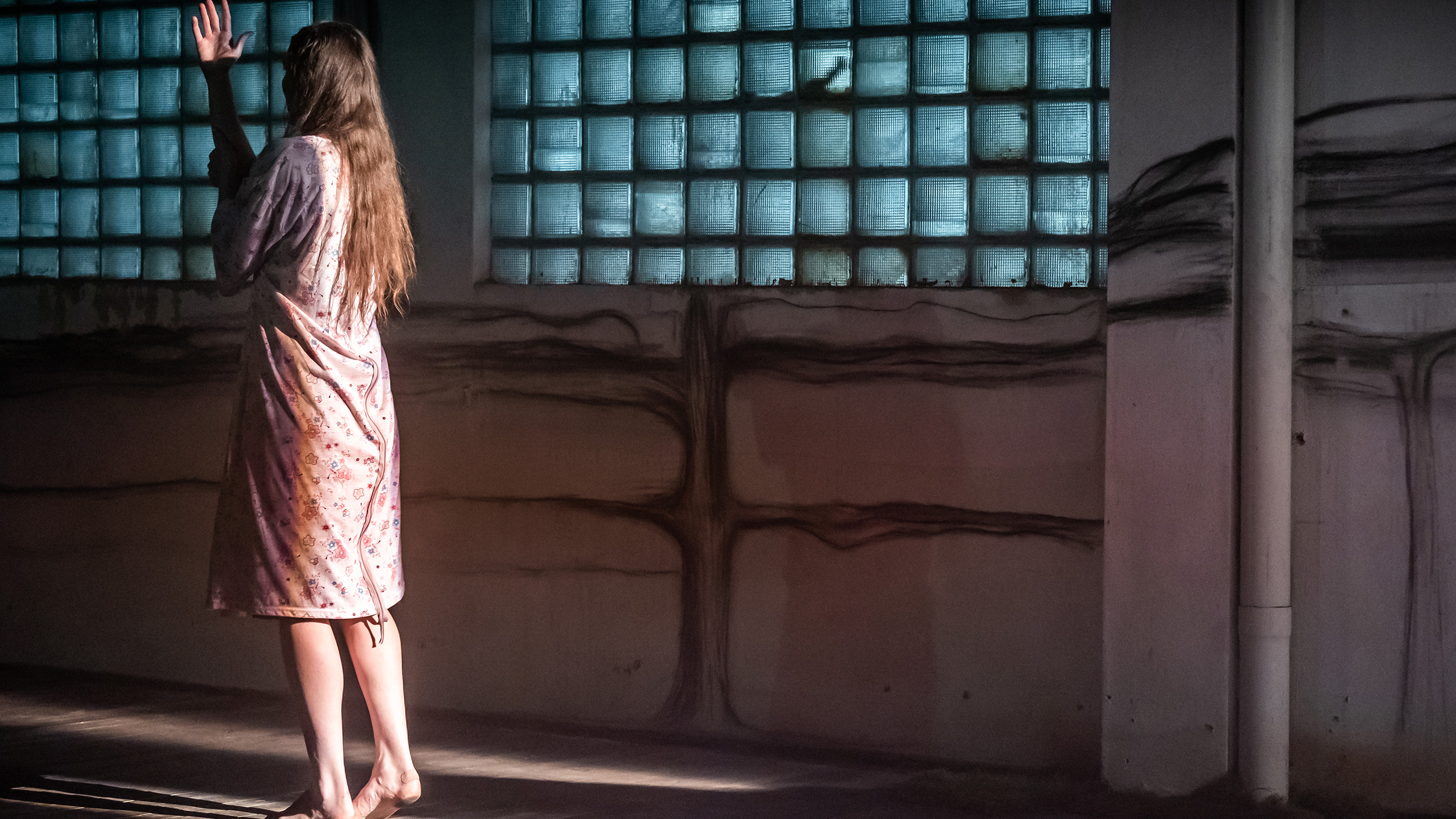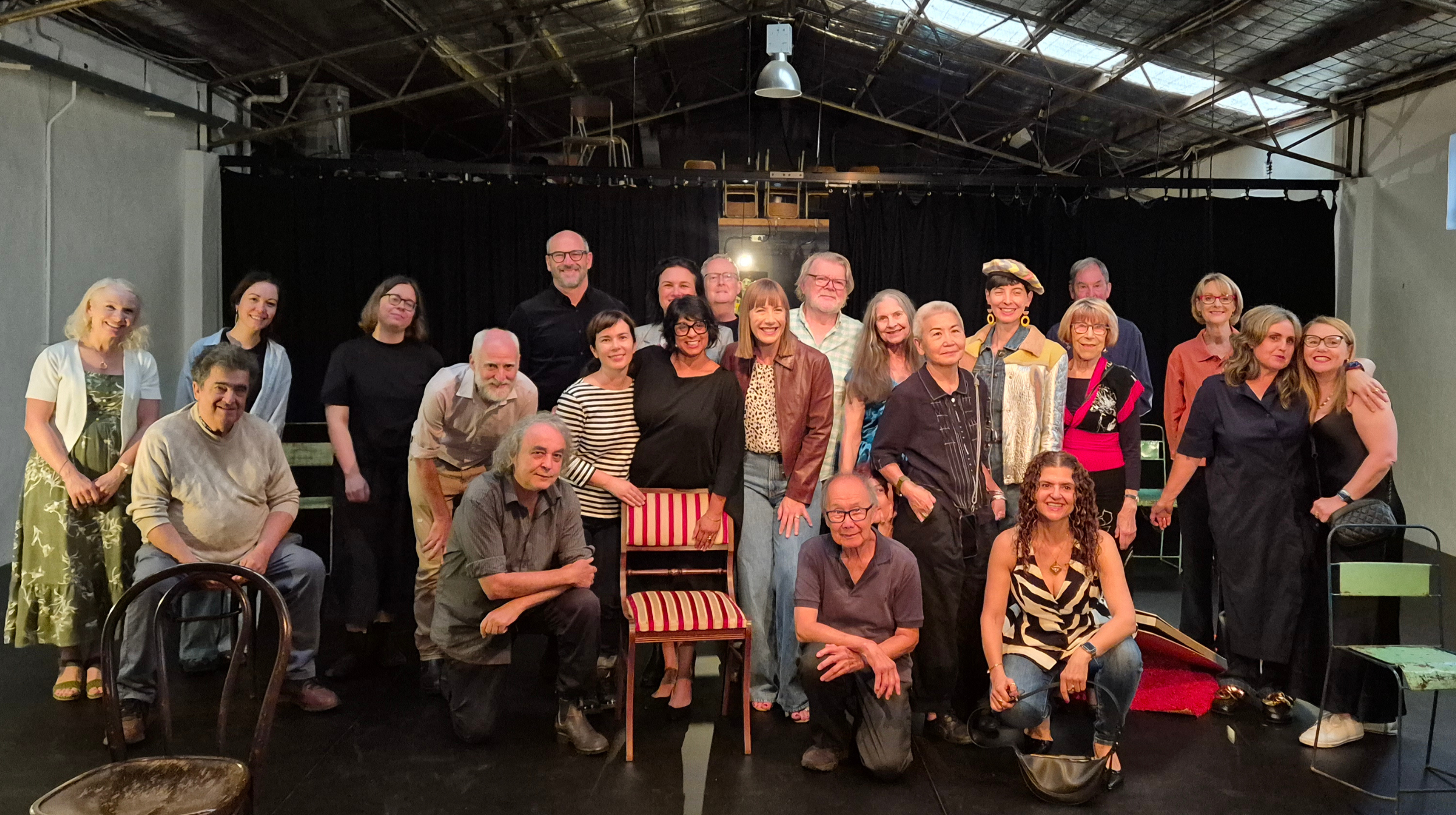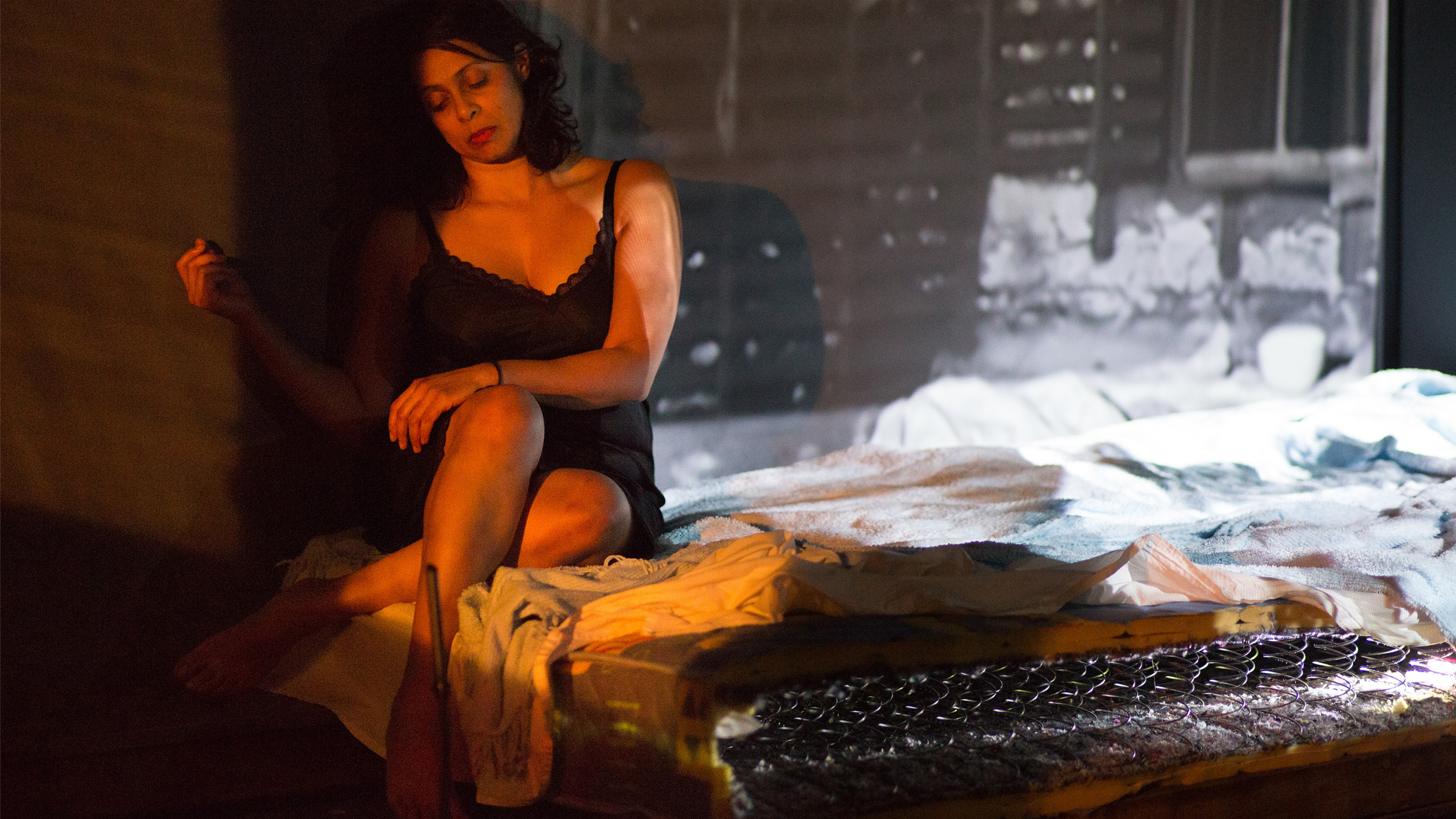
The tension of abstraction
Hannah Della Bosca
29.04.2022
The foul of the air is an immersive performance that challenges conventional theatre through its visceral use of bodies, sound, and space. This reflection explores how the work’s intense physicality and symbolic language create a powerful experience that resonates beyond traditional narrative understanding.
The foul of the air presented the beauty and the power of physical assemblage, with the energy and intentions of the performers and the audience merging through physical proximity. The filmed remnants of the live performance of The Foul of the Air are just that – perfectly curated and edited slices of a performance that in person was as disorienting and uncomfortable as a nauseating car ride.
The denseness of the air, cloying commotion, the bass sonics undertoning, overriding and guiding confusion, lights, and atmosphere. An atmosphere made of spotlights and darkness, colour – red; movement, madness, and stillness.
It was a performance made of bodies, and the resonances that filled them and spilled out of them and came into being between them. Of hectic, malleable women; of more-human-than-human double basses orchestrating chaos; of men conspicuously absent in their presence. And us, the living audience, listening, watching, struggling to comprehend.
The filmic frame of the foul of the air recording provides a smooth sensibility that was absent in the moments of performance. The aesthetic beauty of the work is evident through the screen, Michelle St Anne’s characteristic sparsity of familiar forms interrupted by surprising bursts of colour and levity as well as by undeniable moments of horror. A birthday celebration and a body throwing itself – herself – down the stairs. These are moments of note, yet there lies a deeper message in the between, the moments of monotony and repetition, the lulling notes whose familiarity masks a variation of pace and tone, a slight atmospheric change.
I draw on my own memory to write this, and my own body’s recall. What is left over when the detail of the performance fades? What is in the vagueness, the lasting impression?
What I find is the inescapability of tension. The tension of abstraction, in which meaninglessness and meaning converge and merge, and separate again. An audience arrives, perhaps, with a desire for ease and comfortable entertainment and is immediately immersed in the heavy and striated air of something quite different. The Foul of the Air demands – sometimes through overt references and sometimes through subversive techniques – that tension be felt. From the physical reverberations of the double bass ensemble to the atmospheric current of running women, the key to this work lies not in the mind but in the body’s response to other bodies.
The foul of the air leans heavily on meticulously symbolic shorthand, enabling the audience to feel but never fully understand the performance. As a researcher, I develop my own and other people’s inquiries about broad questions of life through the techniques of the academic humanities – structured logics, clear lineages of thought, and the reverberating hope that this clear understanding will lead to better outcomes in the future. Whatever this approach has been applied to – from issues of environmental protection and regulation, to human and more-than-human identities, to community resilience to disaster events – ultimately the meaning of the work comes back to the particularity of each body as it lives out vital tensions of similarity and difference, community and isolation, violence and care.
The diverging techniques of theatrical and academic performance highlight the tension between making phenomena sense-able and making them sensible. One seeks to convey meaning through orchestrated bodies and a shared experience, the other through carefully constructed theoretical abstractions. Both traditions emerge from and contribute to types of knowledge, and in my experience working in an interdisciplinary group of academics and theatrical, musical and artistic practitioners, it is the blending, breaking, and merging of boundaries around these knowledge types that can harness the transformational qualities of both for greater effect.
Collaborations between methods of artistic practice and academic research provide a space that emphasises the physical body and the knowledges that are held and reside there. Since joining the research collective, my own work has taken on greater engagement with the biological and cultural meanings of the body and its senses. Developing prior research into community experiences of heatwaves in Western Sydney, we have focused on the stories of sweat, its histories and narratives of experience. A heightened attention to the stories of the body suggest that we have both an excess and an absence of knowledge about ourselves and each other. We can afford perhaps more meaning and understanding when we make way for more aesthetic sensibilities that don’t try to explain that tension away, but rather tell a story that allows the audience to make sense of that confusion themselves.
Hannah Della Bosca is a PhD candidate in the Department of Sociology and Social Policy and a Research Assistant at the Sydney Environment Institute. Hannah has a background in Legal Geography around environmental decision making, generational coal mining communities and energy transitions, and protected upland swamps. She has previously contributed to research on community resilience and responses to disruption, and continues to work on projects related to environmental and social justice, and violence.


